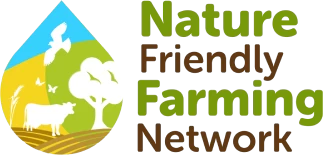The Scottish Government’s draft Agriculture and Rural Communities Bill will change how farmers and crofters receive support in Scotland, but does it go far enough?
What is the Agriculture Bill?
In 2020, Scotland passed a bill granting ministers the power to ensure the EU’s Common Agricultural Policy (CAP) continued, whilst giving the ability to make some simplifications and improvements to the scheme following Brexit.
The Scottish Government then published a Vision for Agriculture in 2022 declaring it will become a global leader in sustainable and regenerative agriculture. This vision is committed to a support framework from 2025 onwards that delivers high-quality food production, climate mitigation and adaptation, nature restoration and rural development.
In trying to realise this vision, the Scottish government has introduced the Agriculture and Rural Communities (Scotland) Bill to parliament. This bill is a necessary piece of framework legislation, providing Scottish ministers further control and flexibility to amend the current Common Agriculture Policy.
The policy memorandum notes that the bill is an attempt to move away from the EU’s CAP, whilst staying aligned with the EU on outcomes. As such, this bill is a legislative necessity.
However, the bill is also intended to meet many other desirable outcomes including the transition to net zero farming, mitigating the nature crisis, allowing rural communities to thrive and protecting the rural economy.
These outcomes sound strongly aligned with nature-friendly farming, but does the proposed support mechanism facilitate it?
What is the four-tiered system?
This bill provides some positive signals for the future direction of agriculture. The bill contains four overarching objectives for policy including the adoption and use of sustainable and regenerative agriculture practices, the production of high-quality food, the facilitation of on-farm nature restoration, climate mitigation and adaptation as well as enabling rural communities to thrive.
A new tiered payment system will be used to try and achieve this.
The four-tiered system explained:
Tier 1 (base) and tier 2 (enhanced) will be a form of direct payment:
Tier 1 (base) will be for minimum levels of agricultural activity and minimum standards of environmental stewardship
Tier 2 (enhanced) will be used to incentivise farmers to go beyond the base level of environmental performance, focusing on reducing greenhouse gas emissions, adapting to climate change as well as protecting, restoring and improving nature
Tier 3 (elective) and tier 4 (complementary) will be indirect payments:
Tier 3 (elective) will be for a range of payments for specific nature or climate improvement undertakings.
Tier 4 (complementary) will be delivering access to support and advice as well as continuous professional development. It will also seek to connect farmers and crofters with support for woodland management, tree planting as well as peatland restoration and management.
Alongside this new support mechanism, Scottish ministers will be required to lay before parliament and publish a rural support plan which covers up to a five-year period detailing strategic priorities for providing support.
This shows promising signs, but is it as good as it sounds?
Is the 4-tiered system enough?
As with all legislation, the devil is more often than not hidden in the details. Whilst the Nature Friendly Farming Network supports the move towards a four-tiered payment system, the allocation of funding is inadequate to support farmers and crofters in meeting the goals that the bill sets out. The financial memorandum indicates that the proportion of funding towards direct payments will be kept in line with previous legislation, so the vast majority of funding will be going towards tier 1 and tier 2.
This means that most of the funding will go towards ineffective and inequitable area-based subsidies. As the base tier only requires meeting minimum environmental standards it will be inadequate at encouraging much-needed large-scale shifts to sustainable and regenerative agriculture. Additionally, these area-based payments mean that the largest landowners will be the ones who receive the greatest amounts of funding. It also means that tier 3 is seen as a ‘competitive’ tier due to budget constraints and tier 4 will largely be made up of pre-existing schemes.


